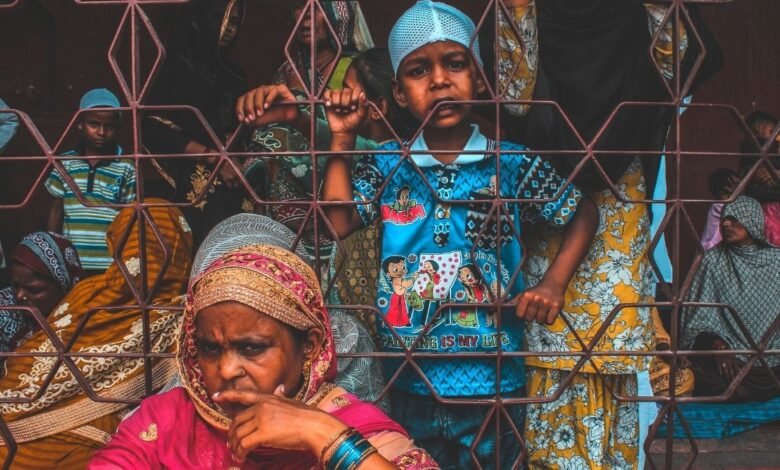Rural India continues to battle poor maternal and child health services

In urban India, the IMR is 20, with 20 babies under the age of one dying out of every 1,000 births, however in rural India, the IMR is 34.
Children born in cities in India have a considerably better probability of surviving their first year than children born in rural areas.
The census office’s most recent statistics on infant mortality rate (IMR) for 2019 shows inadequate quality maternal and child health care in rural regions, as well as restricted access to these services.
The IMR in urban India is 20, with 20 newborns under the age of one dying out of every 1,000 births, compared to 34 in rural India, which indicates a halt in attempts to overcome the rural-urban disparity. In fact, the difference has expanded somewhat in the five years leading up to 2019.
IMR disparity disturbingly high in rural Assam and MP
While the IMR disparity between rural and urban regions has shrunk in all states, it remains disturbingly high in Assam and Madhya Pradesh, where rural areas account for 86% and 72% of the total population, respectively.
The states of Odisha, Rajasthan, and Gujarat have, however, made the most progress in closing the IMR discrepancy between rural and urban regions.
| 2019 | 2009 | |||||
| State | Rural | Urban | Gap | Rural | Urban | Gap |
| Assam | 42 | 19 | 23 | 64 | 37 | 27 |
| Madhya Pradesh | 50 | 32 | 18 | 72 | 45 | 27 |
| Rajasthan | 38 | 25 | 13 | 65 | 35 | 30 |
| Uttar Pradesh | 44 | 31 | 13 | 66 | 47 | 19 |
| Gujarat | 29 | 18 | 11 | 55 | 33 | 22 |
| Maharashtra | 22 | 12 | 10 | 37 | 22 | 15 |
| Andhra Pradesh | 28 | 19 | 9 | 54 | 35 | 19 |
| Odisha | 39 | 30 | 9 | 68 | 46 | 22 |
| Telangana | 26 | 18 | 8 | * | * | 0 |
| Chhattisgarh | 41 | 34 | 7 | 55 | 47 | 8 |
| Haryana | 30 | 23 | 7 | 54 | 41 | 13 |
| Jharkhand | 28 | 23 | 5 | 46 | 30 | 16 |
| Karnataka | 23 | 18 | 5 | 47 | 31 | 16 |
| Tamil Nadu | 17 | 12 | 5 | 30 | 26 | 4 |
| J&K | 21 | 17 | 4 | 48 | 34 | 14 |
| West Bengal | 21 | 18 | 3 | 34 | 27 | 7 |
| Bihar | 29 | 27 | 2 | 53 | 40 | 13 |
| Kerala | 7 | 5 | 2 | 12 | 11 | 1 |
| Uttarakhand | 28 | 26 | 2 | 0 | ||
| Punjab | 19 | 18 | 1 | 42 | 31 | 11 |
| Delhi | NA | 11 | NA | 40 | 31 | 9 |
| Himachal Pradesh | NA | NA | NA | 46 | 29 | 17 |
| India | 34 | 20 | 14 | 55 | 34 | 21 |
Many states have been, improving, narrowing the gap in IMR
In 2009, rural Odisha had the country’s second-highest IMR of 68, while its urban IMR was 46. It gradually narrowed the difference to a single digit, and by 2019, the rural and urban IMRs were respectively 39 and 30.
Gujarat, too, has drastically narrowed the gap during the previous decade. The rural and urban IMRs were 55 and 33 in 2009, respectively, but by 2019 they had decreased to 29 and 18.
Rajasthan had the widest discrepancy between rural and urban IMR (65 and 35) in 2009, and its rural IMR was among the highest in India. It has not only reduced rural IMR, but it has also decreased the gap between rural and urban regions (38 to 25) by 2019, which is a considerable improvement from where it began.
Rural Madhya Pradesh has the highest IMR in the country
In 2009 (72), 2014 (57), and 2019 (50), rural Madhya Pradesh has the highest IMR in the country. Though an IMR of 57 in 2014 was a significant improvement compared to 72 in 2009, the rate of improvement has slowed by 2019, with the rural IMR falling to just 50 in 2019. Furthermore, the rural-urban divide remained the second-largest in the country, after only Assam, which made little headway in closing it.
The infant mortality disparity between rural and urban areas has been decreased to single digits in some regions. In Uttar Pradesh, where 78 per cent of the population resides in rural regions, the disparity has remained in double digits and has remained nearly stable between 2014 and 2019.
The present scenario of maternal and child health services
The Maternal Mortality Ratio has decreased dramatically in India after the launch of the National Rural Health Mission (NRHM) in 2005, owing to a considerable increase in maternal health care services.
The country, on the other hand, has failed to meet the millennium development objective of lowering maternal death rates by 2015. This has resulted in a multitude of problems, not just limited to increased IMR but severe cases of child wasting as well.
Furthermore, there are tremendous disparities at the regional, geographic, economic, and social levels, and different socioeconomic variables contribute to the huge proportion of inequality in maternal health care utilization in India.
Better healthcare needed in rural India
While improved urban IMR in a state demonstrates what is achievable when better healthcare is available, many of these lagging states’ urban IMR is higher than the rural IMR of better-performing states.
This brings the fact home as to how much these states need to work on public healthcare services, so as to not only improve the IMR rate in both the urban and rural areas alike but also prioritize the public health services in general.
Besides, there is a need for widespread knowledge about maternal health care systems in rural areas of the country through a robust use of various means of mass media.



